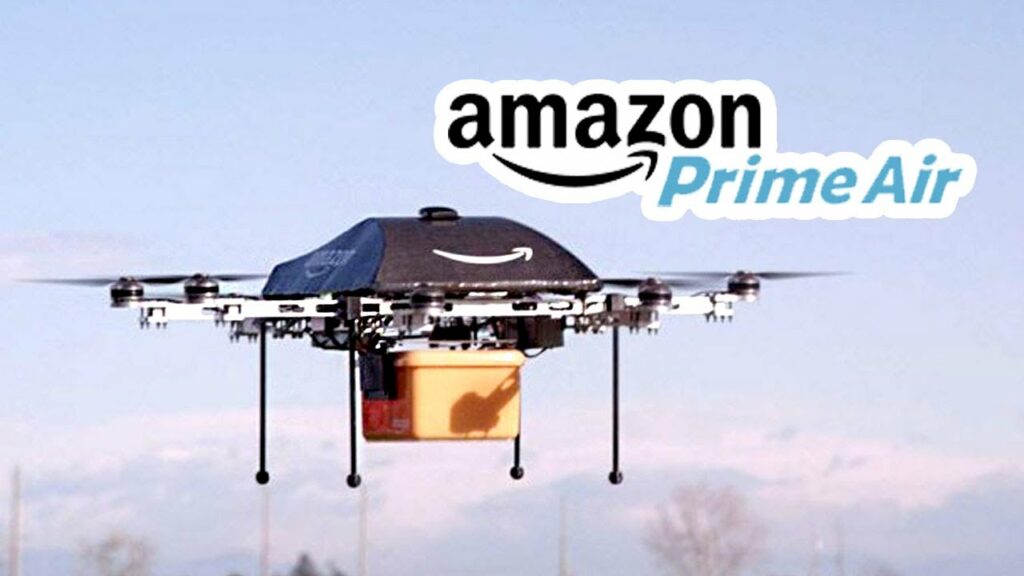A revolution in EVTOL (Electric Vertical Takeoff and Landing) started with consumer drones and has quickly expanded to flying cars. The rapid growth of the EVTOL ecosystem is driven primarily by traditional hardware and software companies however new investment scenarios in Air Rights may soon be possible.

Let’s start with some recent market analysis:
- The US Has the Largest Drone Market in the World
The United States is home to the largest drone market in the world and has been for the past few years. The US will remain in the lead in the forthcoming years, but the Chinese drone market is slowly closing that gap. While in 2024 the US will still be the largest drone market in the world, the Chinese drone market will be catching up as it will grow faster. - The US Commercial & Private Drone Market will Almost Triple in Size by 2024
Even though the US drone market won’t grow quite as quickly as some others (China, and India), it will still be one of the fastest growing drone markets in the world. By 2024 it is expected to be almost three times the size it was in 2018 - US Commercial Drone Unit Sales Will Quadruple Between 2018 and 2024
Not only will the market grow rapidly, but so will commercial drone unit sales. In fact, in 2024 in the US there will be four times as many drones sold as in 2018. - US is Home to Over 50% of Global Drone Investments
Year in and year out the US has been home to over half of global drone investments. This decreased slightly in 2018 when out of the total 702 billion USD just less than half went to the US, but there is still no country in the world receiving anywhere near as much of disclosed drone investment as the United States. This also partly explains the level of activity visible on the US market – over half of all strategic drone partnerships involve one or more US companies - The FAA is Pouring its Resources into Developing a UTM System
Finally, in addition to having the largest drone market in the world, the United States also has a growing administrative infrastructure to support it. The US Aviation Agency, the FAA, is supporting five different initiatives working towards establishing an unmanned traffic management (UTM) system as we speak.
So with EVTOL exploding how will Air Rights be relevant ?
The airspace EVTOL aircraft will operate in, typically less than 500 feet, will be constrained by property rights. The challenge for the FAA is how to regulate EVTOL aviation in airspace that does not have a public easement. Balancing property rights while fostering the growth of the EVTOL industry will require a unique approach.
Potential Regulatory Scenarios:
- Congress enacts legislation modifying the existing public easement created by the FAA Act of 1958 by lowering minimum safe altitudes below the limits set in 91.119. Air Rights would be assumed to exist between ground and new minimum altitude.
- Congress enacts legislation creating a new public easement, below the existing public air space, specifically for EVTOL aircraft down to a some level above ground (i.e. 200 feet). This is unlikely to happen.
- States enact their own regulations on drone overflight of private property. For example Nevada, and many other states, restricts drone overflight to 250 feet. This is a good solution because air rights are codified in law as property thereby making aerial trespass actionable under certain conditions. Since it’s already happening there will likely be a patchwork of state regulations requiring a unified air rights management platform !
- Private sector solution to air rights management. Electronic contracts (e.g. Ethereum) and existing wireless technology can provide real time access control and billing for EVTOL aircraft passing through private air space. Property owners, who voluntarily opt in, are compensated for the use of their airspace while aircraft operators get risk management and liability protection.
SkyRights believes scenarios #3 and #4 are the best solution to balance the rights of property owners while simultaneously expanding investment in the EVTOL industry.
